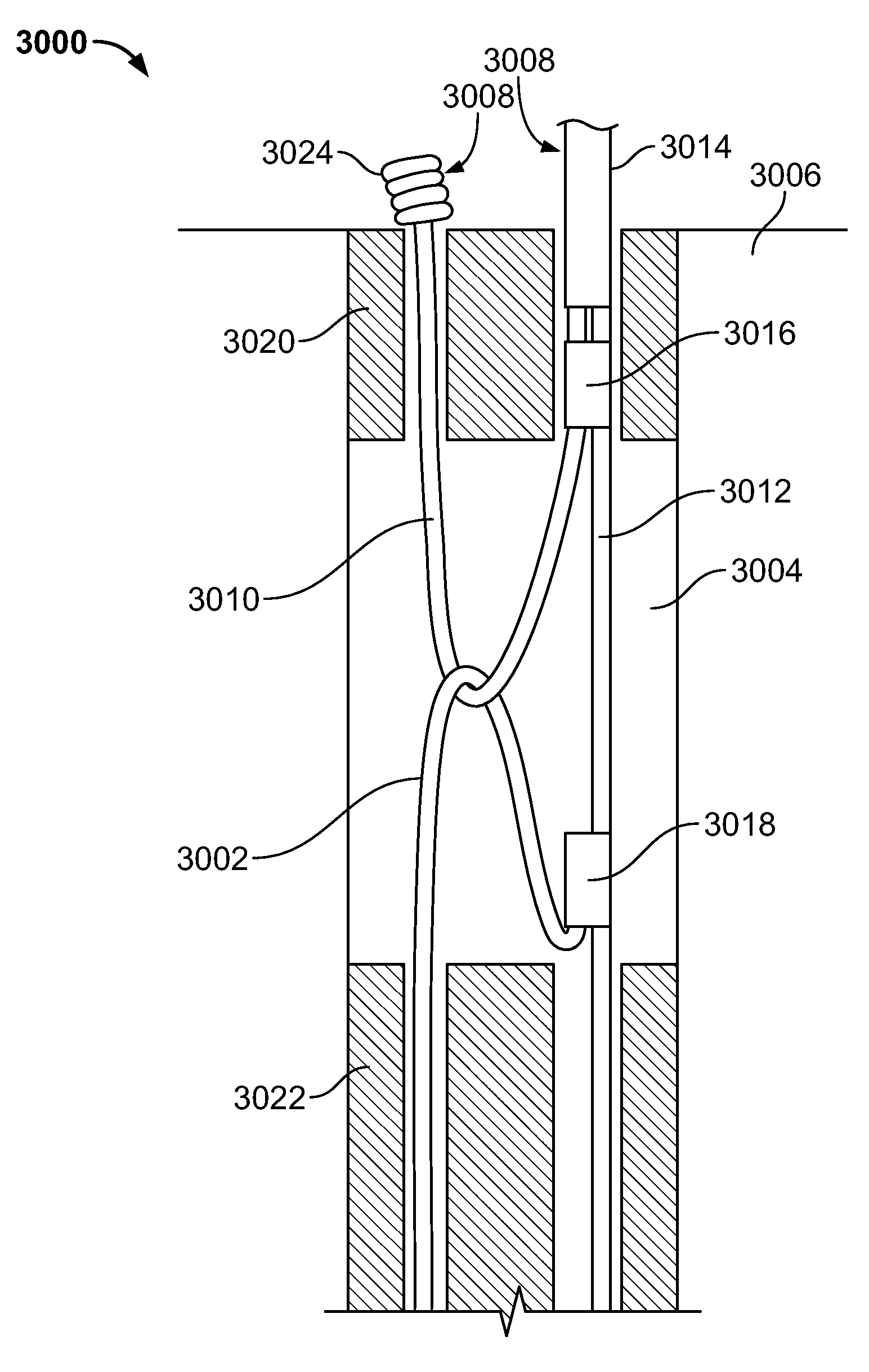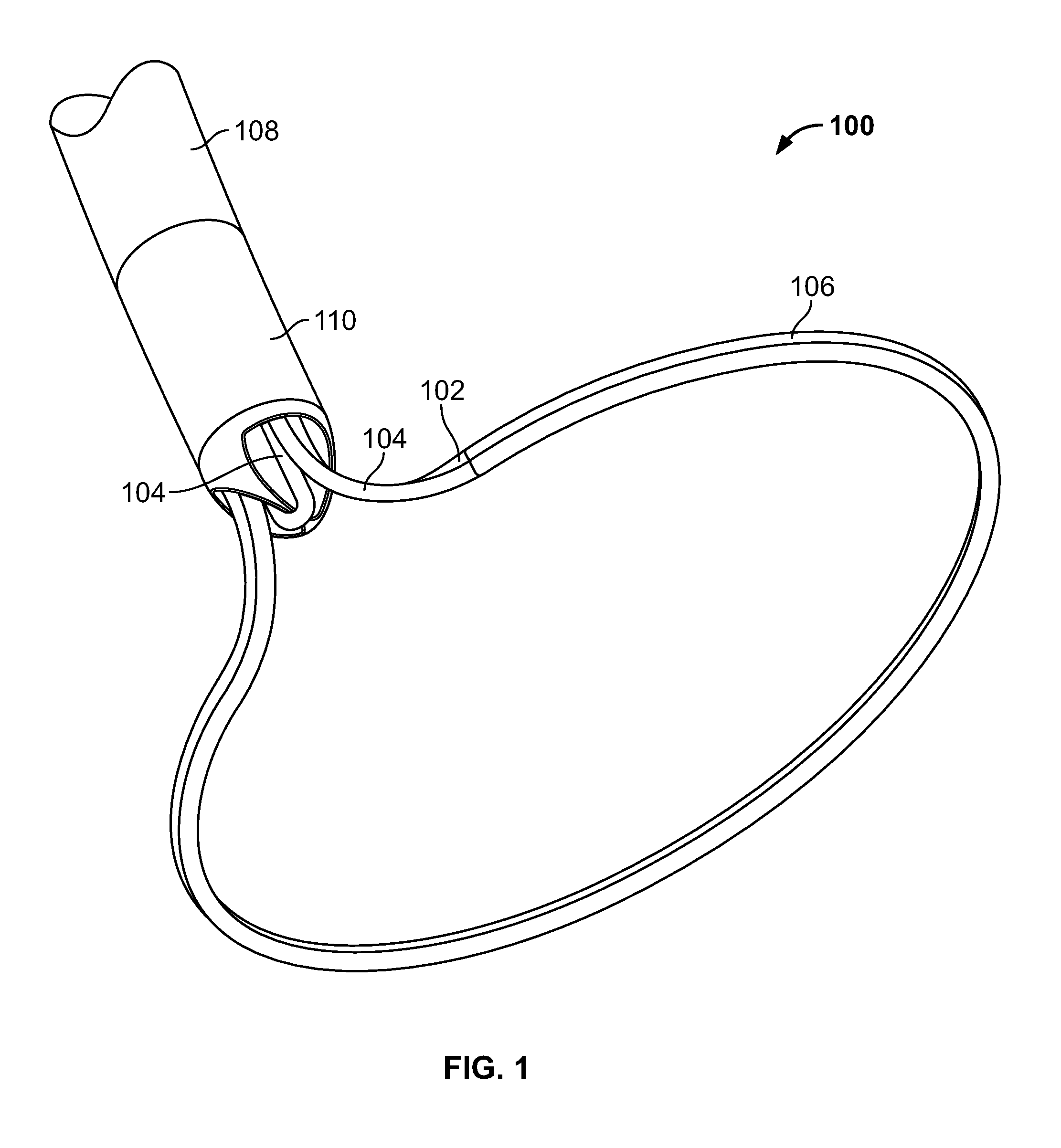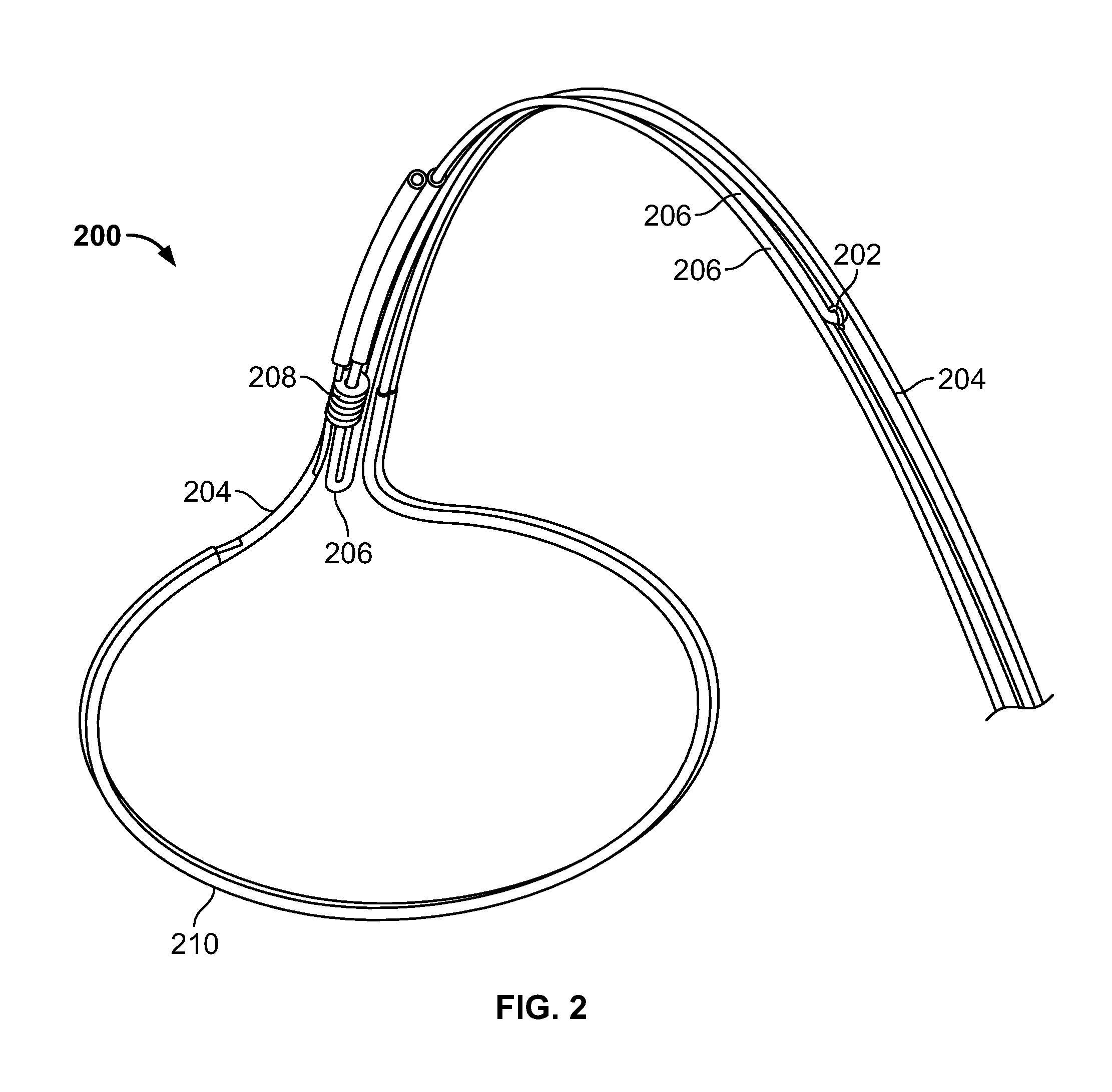Tissue ligation devices and controls therefor
- Summary
- Abstract
- Description
- Claims
- Application Information
AI Technical Summary
Benefits of technology
Problems solved by technology
Method used
Image
Examples
Embodiment Construction
[0036]Described here are closure devices, handles for actuating closure devices, and methods for closing tissues using one or more closure devices. Generally, the closure devices comprise a snare loop assembly comprising a snare and a suture loop, such as those described in U.S. patent application Ser. No. 12 / 055,213, entitled “Devices, Systems, and Methods for Closing the Left Atrial Appendage” and filed on Mar. 5, 2008, which is incorporated by reference herein in its entirety. The devices described here may be suitable for use with minimally invasive access to the left atrial appendage (e.g., through a small incision above, beneath or through the rib cage, through an incision in the costal cartilage or the xiphoid, through a port, through the vasculature, etc.).
[0037]Generally, the closure devices described here comprise an elongate body, and a snare loop assembly. In some variations the closure devices may further comprise a handle. A handle or other control mechanism (e.g., a s...
PUM
 Login to View More
Login to View More Abstract
Description
Claims
Application Information
 Login to View More
Login to View More - R&D
- Intellectual Property
- Life Sciences
- Materials
- Tech Scout
- Unparalleled Data Quality
- Higher Quality Content
- 60% Fewer Hallucinations
Browse by: Latest US Patents, China's latest patents, Technical Efficacy Thesaurus, Application Domain, Technology Topic, Popular Technical Reports.
© 2025 PatSnap. All rights reserved.Legal|Privacy policy|Modern Slavery Act Transparency Statement|Sitemap|About US| Contact US: help@patsnap.com



